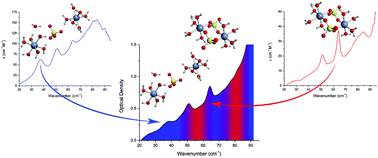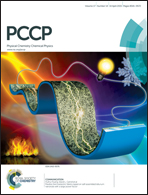The role of terahertz polariton absorption in the characterization of crystalline iron sulfate hydrates†
Abstract
Iron sulfate compounds have been used extensively to produce iron gall ink, a widely used writing ink in the western world from the 12th–20th centuries. Iron gall ink is well known to corrode writing supports, so detection of iron species is important for the preservation of historical artwork and documents. Iron(II) sulfate readily changes hydration states and oxidizes in ambient conditions, forming compounds that contribute to this deterioration. In this study, five forms of iron sulfate are characterized by terahertz spectroscopy and solid-state density functional theory (DFT). The results have revealed that the room temperature spectra of FeSO4·7H2O and FeSO4·4H2O are remarkably similar, differing by only a single absorption feature. The identifying terahertz spectra provide an unambiguous metric to determine the relative concentrations of the most common hydrates FeSO4·7H2O and FeSO4·4H2O in a mixed sample. Complete spectral assignments of these species were accomplished by quantum mechanical simulations, with the exception being a single anomalous feature at approximately 40 cm−1 in the heptahydrate. This peak is believed to be due to polariton absorption, brought about by the particular coordination structure of FeSO4·7H2O that results in a greater charge separation relative to the other iron sulfate crystals.


 Please wait while we load your content...
Please wait while we load your content...